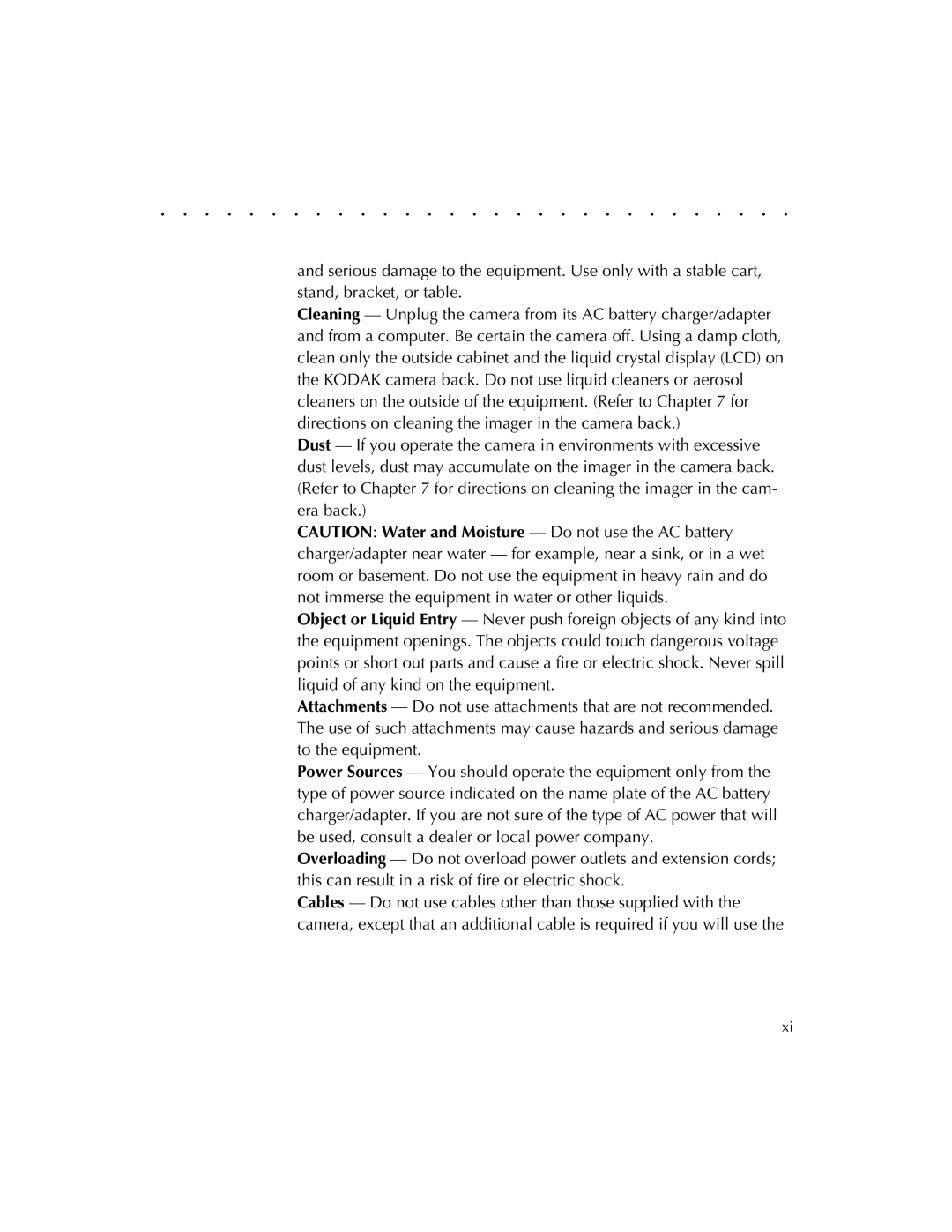. . . . . . . . . . . . . . . . . . . . . . . . . . . . .
and serious damage to the equipment. Use only with a stable cart, stand, bracket, or table.
Cleaning — Unplug the camera from its AC battery charger/adapter and from a computer. Be certain the camera off. Using a damp cloth, clean only the outside cabinet and the liquid crystal display (LCD) on the KODAK camera back. Do not use liquid cleaners or aerosol cleaners on the outside of the equipment. (Refer to Chapter 7 for directions on cleaning the imager in the camera back.)
Dust — If you operate the camera in environments with excessive dust levels, dust may accumulate on the imager in the camera back. (Refer to Chapter 7 for directions on cleaning the imager in the cam- era back.)
CAUTION: Water and Moisture — Do not use the AC battery charger/adapter near water — for example, near a sink, or in a wet room or basement. Do not use the equipment in heavy rain and do not immerse the equipment in water or other liquids.
Object or Liquid Entry — Never push foreign objects of any kind into the equipment openings. The objects could touch dangerous voltage points or short out parts and cause a fire or electric shock. Never spill liquid of any kind on the equipment.
Attachments — Do not use attachments that are not recommended. The use of such attachments may cause hazards and serious damage to the equipment.
Power Sources — You should operate the equipment only from the type of power source indicated on the name plate of the AC battery charger/adapter. If you are not sure of the type of AC power that will be used, consult a dealer or local power company.
Overloading — Do not overload power outlets and extension cords; this can result in a risk of fire or electric shock.
Cables — Do not use cables other than those supplied with the camera, except that an additional cable is required if you will use the
xi
